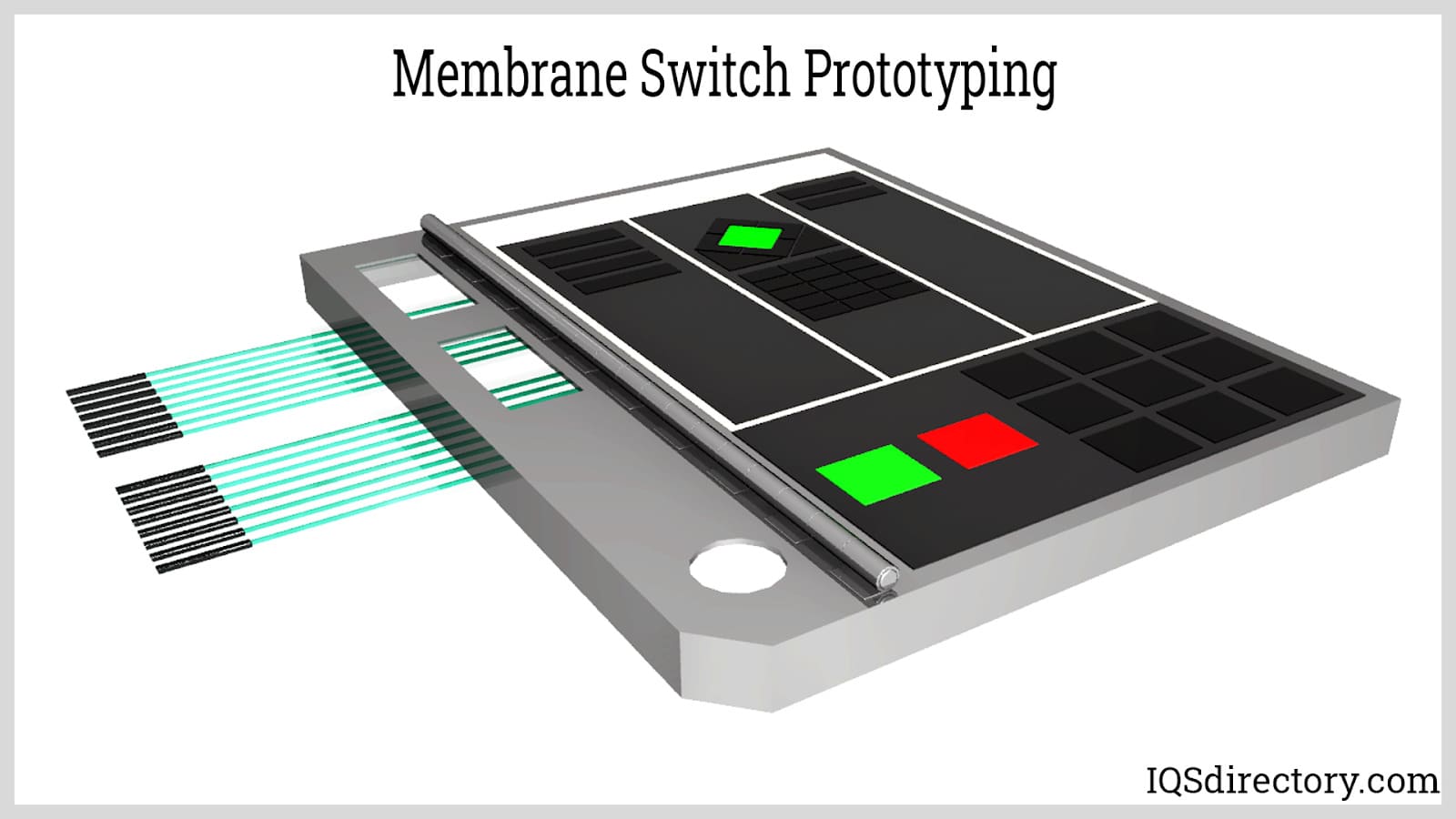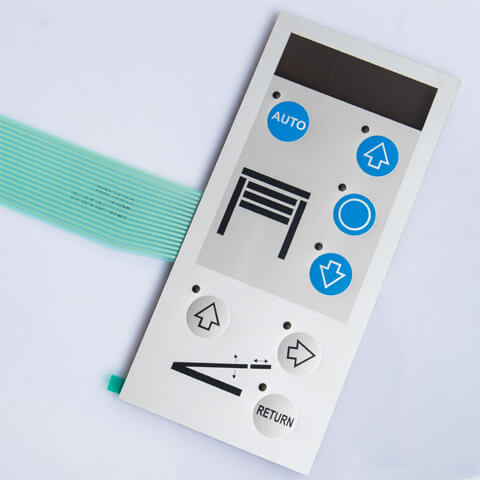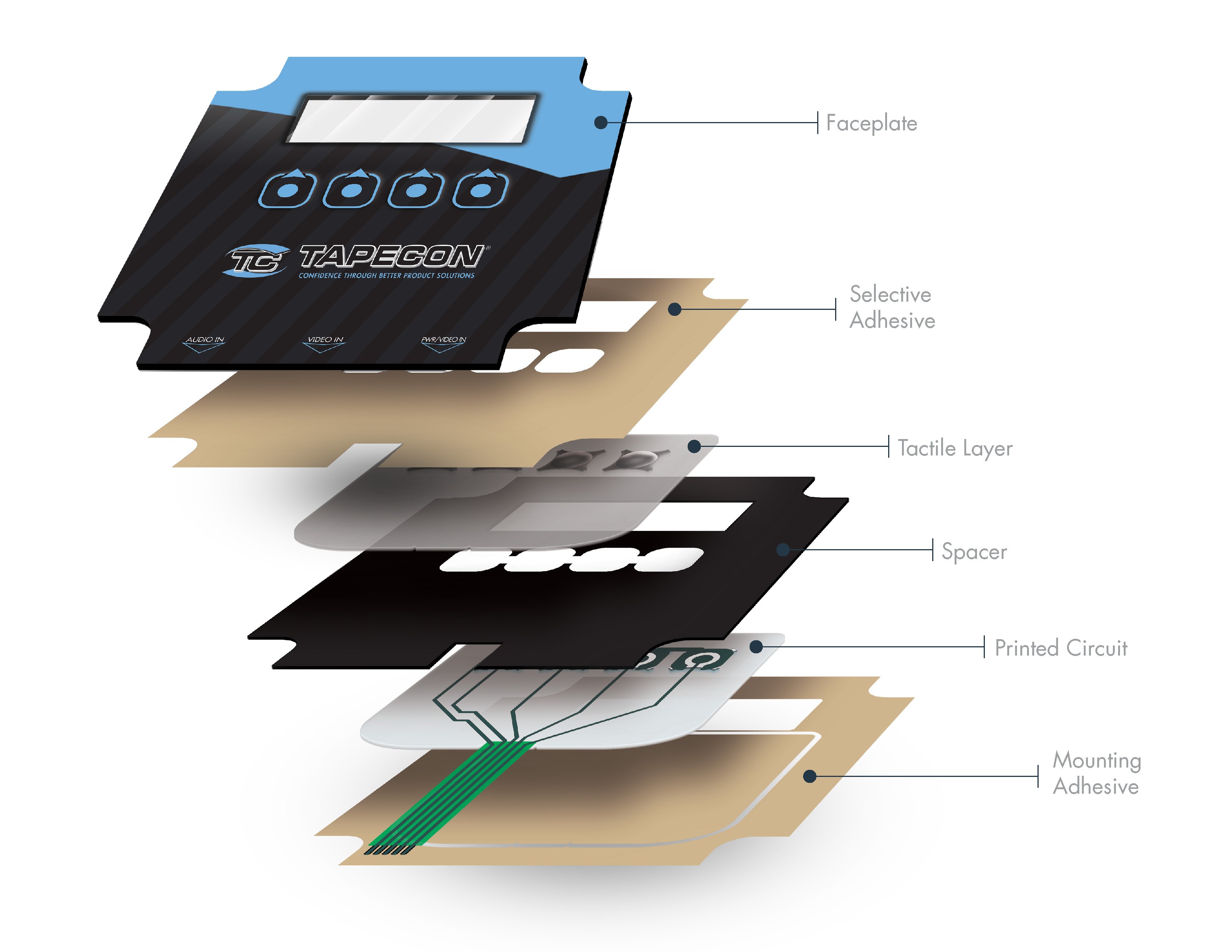Membrane Layer Switch Modern Technology: The Secret to Reliable and Cost-Effective Interfaces
Membrane layer button innovation has arised as a crucial component in the design of user interfaces, providing both integrity and cost-effectiveness throughout a diverse series of applications. Its durable construction makes sure resistance to environmental challenges, while the flexibility in style allows for customized solutions that meet specific market needs. As we check out the multifaceted benefits of membrane switches, their capacity for technology questions about future applications and evolving fads. What does the next chapter hold for this innovation in a progressively digital landscape?
Comprehending Membrane Layer Switch Over Innovation
Membrane layer switch innovation is an extensively used user interface solution in various electronic devices, providing a smooth mix of performance and layout. This innovation incorporates several layers of materials, typically containing a graphic overlay, spacer layer, and a circuit layer. The graphic overlay shows the interface components, while the spacer layer separates the circuit layer from the overlay up until a customer activates a switch.
When stress is related to the overlay, the circuit layer finishes the electrical circuit, sending a signal to the gadget. This device allows for different arrangements, consisting of tactile feedback and backlighting choices, enhancing user interaction. Membrane layer switches are usually made utilizing resilient products such as polyester or polycarbonate, guaranteeing long life and resistance to ecological elements like dampness and dust.
The versatility of membrane layer switches over enables their application in varied markets, including clinical tools, customer electronics, and industrial controls. Their portable style enables combination right into space-constrained atmospheres, supplying a reliable customer interface without endangering visual appeal. Comprehending the complexities of membrane switch technology is essential for producers and developers seeking to produce trusted and efficient human-machine user interfaces.
Secret Benefits of Membrane Switches
While different user interface solutions exist, membrane layer changes offer unique benefits that make them a favored option in countless applications. Among the key benefits is their durability; membrane buttons are made to stand up to harsh environmental problems, consisting of wetness, dust, and temperature level fluctuations, making sure long-lasting efficiency. This resilience dramatically lowers the need for constant substitutes, thus lowering overall upkeep costs.

Moreover, membrane layer switches are lightweight and portable, making them ideal for applications where area is restricted. Their inconspicuous style contributes to a streamlined appearance without endangering capability.
Cost-effectiveness is likewise a noteworthy benefit, as the production procedure for membrane switches tends to be cheaper contrasted to standard mechanical buttons. This affordability, incorporated with their dependability and ease of setup, positions membrane layer changes as a useful remedy for a broad variety of industries seeking efficient and effective interface.
Applications Throughout Different Industries
Exactly how do membrane buttons adapt to the varied demands of numerous markets? Membrane layer button modern technology is increasingly acknowledged for its convenience, making it ideal for a variety of applications throughout multiple markets. In the medical field, membrane layer buttons are used in analysis devices and individual surveillance tools, where their longevity and convenience of cleansing are check my blog crucial for keeping hygiene criteria. The vehicle market uses these switches in control panels and control panels, using a streamlined aesthetic while ensuring user-friendly operation.
In consumer electronics, membrane buttons provide a small remedy for push-button controls and home devices, boosting user experience via intuitive style. Additionally, the industrial market leverages membrane switches for equipment control panels, taking advantage of their resistance to rough environments, such as dampness and dust.
Army and aerospace applications likewise use membrane buttons for their dependability and ability to withstand extreme problems, making sure operational efficiency in vital situations. The food and drink industry takes on these buttons for automated systems, where sanitation and ease of operation are paramount (membrane switch). Eventually, membrane switches are tailored to fulfill the special needs of each sector, confirming their important function in contemporary innovation interfaces
Layout and Modification Options

In the realm of membrane layer switch innovation, design and personalization choices play a critical function in boosting capability and individual interaction. These buttons can be customized to meet specific operational requirements and visual preferences, making them functional elements in different applications.
One of the primary customization alternatives is the design of the button itself, which can be developed to accommodate unique interface and ergonomic factors to consider. By changing the form, size, and arrangement of switches, suppliers can produce user-friendly designs that promote ease of usage. In addition, the consolidation of different shades and graphic overlays enables branding and boosted exposure, making sure that users can quickly recognize functions.
Moreover, membrane layer switches can be engineered with various responsive comments mechanisms, such as elevated buttons or distinct clicks, to improve the customer experience. Various materials can additionally be chosen for toughness learn the facts here now and environmental resistance, resolving aspects such as wetness, temperature level changes, and chemical direct exposure.
Inevitably, the comprehensive design and customization alternatives available in membrane button technology empower businesses to produce customized services that not explanation just meet practical needs but additionally align with their branding and functional demands.

Future Patterns in Membrane Layer Buttons
As membrane switch innovation remains to evolve, future trends are progressively concentrated on enhancing user experience and integrating innovative capabilities. One significant trend is the combination of touch-sensitive and capacitive modern technologies into conventional membrane layer buttons. This growth permits more intuitive individual interfaces, giving responsive feedback while maintaining a sleek design.
Another emerging pattern is using eco-friendly products, driven by the expanding need for lasting production methods. Producers are seeking to decrease their carbon footprint by utilizing recyclable substrates and low-impact inks, aligning with global sustainability objectives.
Additionally, the surge of the Net of Points (IoT) is triggering the consolidation of wise features into membrane layer switches. Enhanced connection alternatives will certainly allow devices to communicate with each various other, enabling for seamless integration into more comprehensive systems.
In addition, advancements in printing modern technologies, such as electronic printing, are permitting higher style flexibility and customization. This makes it possible for makers to create elaborate layouts and vivid shades cost-effectively.

Conclusion
In verdict, membrane switch innovation stands for a vital advancement in customer interface style, offering significant advantages in toughness, personalization, and cost-effectiveness. As innovations continue to emerge, especially in touch-sensitive interfaces and lasting products, the potential for membrane layer changes to enhance user experience and functionality stays appealing.